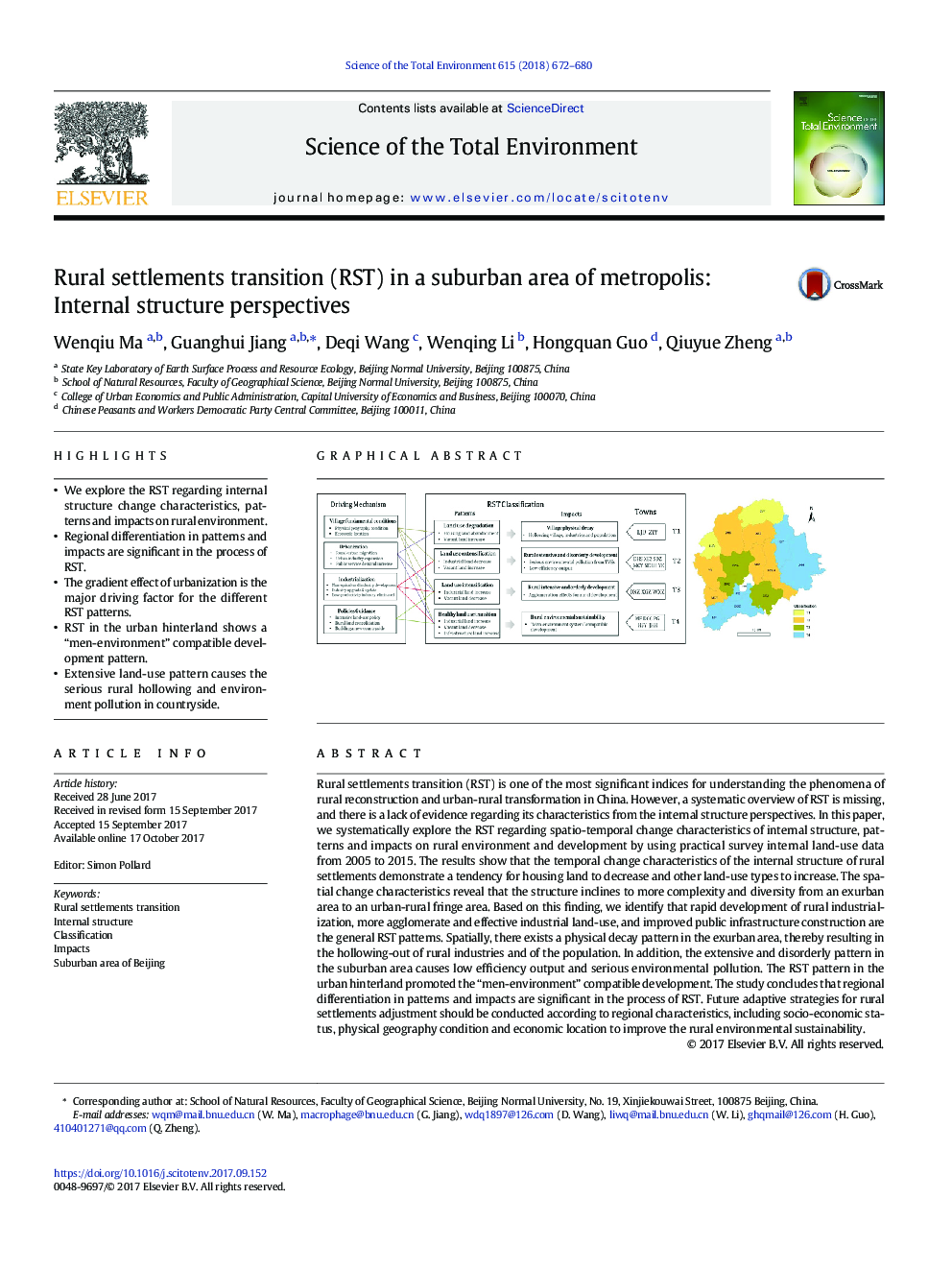| Article ID | Journal | Published Year | Pages | File Type |
|---|---|---|---|---|
| 5749824 | Science of The Total Environment | 2018 | 9 Pages |
â¢We explore the RST regarding internal structure change characteristics, patterns and impacts on rural environment.â¢Regional differentiation in patterns and impacts are significant in the process of RST.â¢The gradient effect of urbanization is the major driving factor for the different RST patterns.â¢RST in the urban hinterland shows a “men-environment” compatible development pattern.â¢Extensive land-use pattern causes the serious rural hollowing and environment pollution in countryside.
Rural settlements transition (RST) is one of the most significant indices for understanding the phenomena of rural reconstruction and urban-rural transformation in China. However, a systematic overview of RST is missing, and there is a lack of evidence regarding its characteristics from the internal structure perspectives. In this paper, we systematically explore the RST regarding spatio-temporal change characteristics of internal structure, patterns and impacts on rural environment and development by using practical survey internal land-use data from 2005 to 2015. The results show that the temporal change characteristics of the internal structure of rural settlements demonstrate a tendency for housing land to decrease and other land-use types to increase. The spatial change characteristics reveal that the structure inclines to more complexity and diversity from an exurban area to an urban-rural fringe area. Based on this finding, we identify that rapid development of rural industrialization, more agglomerate and effective industrial land-use, and improved public infrastructure construction are the general RST patterns. Spatially, there exists a physical decay pattern in the exurban area, thereby resulting in the hollowing-out of rural industries and of the population. In addition, the extensive and disorderly pattern in the suburban area causes low efficiency output and serious environmental pollution. The RST pattern in the urban hinterland promoted the “men-environment” compatible development. The study concludes that regional differentiation in patterns and impacts are significant in the process of RST. Future adaptive strategies for rural settlements adjustment should be conducted according to regional characteristics, including socio-economic status, physical geography condition and economic location to improve the rural environmental sustainability.
Graphical abstractDownload high-res image (297KB)Download full-size image
